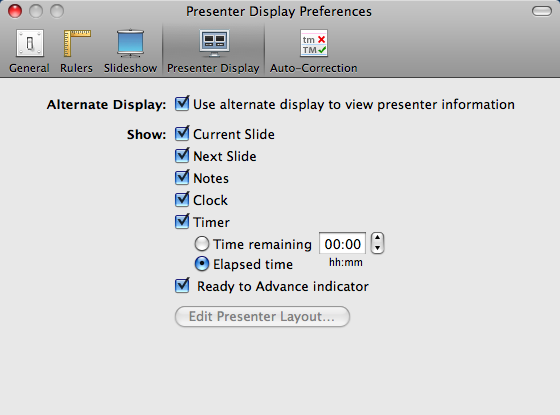Before Leopard, I had a specific backup strategy for both my volatile content (things like source code, documents, etc) and my entire hard drive, which was a snapshot backup. The volatile documents solution was Subversion, kept on a remote, universally accessible machine. The snapshot backup was handled by
SuperDuper, which backs up your entire drive in a bootable state, essentially creating a complete snapshot of your hard drive. A couple of problems reared up because of this setup.
- I had to handle the "package" files (the ones created by Apple iWork, like Keynote and Numbers) files specially, because Subversion didn't like the way the applications managed the contents. Basically, I had to zip/unzip them for version control. This wasn't terrible (I automated the process to a large degree), but still a little annoying.
- My Subversion repository was huge, because I had my entire Documents folder in it. However, most of the documents were there just so that I could have a backup, not because I wanted to version them. The only files I really versioned where the source files and related content.
The advent of Leopard and Time Machine changed my strategy. First, I separated out the Documents stuff for which I really only wanted backups and let Time Machine handle them. I put all my versionable files (like source files) in a new, much smaller Subversion repository. And, even though I have Time Machine, I still use SuperDuper to create backups. The reason I use both:
- I want the hourly, behind the scenes backup provided by Time Machine.
- I want to be able to browse backwards in time to look at previous versions of those files, and the Time Machine UI is gorgeous for that.
- Time Machine alone isn't sufficient. To restore from Time Machine, you have to boot your machine from a startup disk, then restore the backup. Yuck! I still like SuperDuper's snapshot approach, which I've proven to myself works flawlessly (see Don't Crack Open Your Mac for the story).
- SuperDuper and Time Machine can share the same drive, so I have a single 500 GB drive that has all my backups on it.
- It's now easier to replicate the source code in more places (IOW, more machines) because it's much smaller.
- You can tell Time Machine to only backup certain directories (or, more specifically, exclude directories you don't want backed up). Because I only use Time Machine for my Documents folder, it takes only a little space.
- Because SuperDuper creates a bootable drive image, and my external drive is FireWire, I can boot another MacBook Pro with the external drive. Yes, it's slow, but if the worst happened while on the road, and I've got to present at a conference, as long as I can borrow/steal another machine, I can boot into my machine from backup and do my presentation.
I've been using this approach for a while, and it works nicely. I leave the external hard drive hooked up all the time, and start a snapshot backup at bedtime every night. SuperDuper has a nice option that will sleep the computer when it's finished it's work. So far, this it working out really well. I haven't had to restore the whole drive from SuperDuper yet on this machine (but I know that works -- I've done it on other machines), and I have used Time Machine to grab a file that accidentally got deleted.

